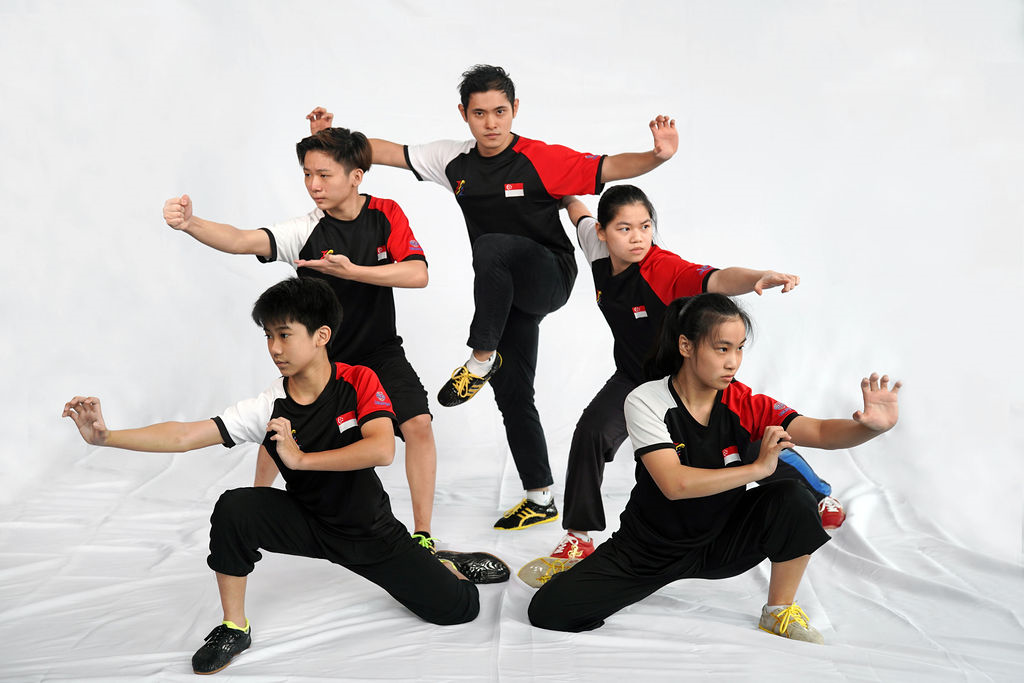Nanquan
Nanquan refers to wushu styles originating in south China. There have been a variety of schools and styles, such as the Hong, Lui, Cai, Li and Mo families in Guangdong province and the Yongchun and Wuzu schools in Fujian province. Each of these styles has its own features, many are known for vigorous, athletic movements with great leg stability, clear-cut movements, good positioning of the body to be ready to react to attack from any direction. Nanquan performers often use vocal articulation called fasheng (“release shout”) and have their muscles bulged when applying force.
This wushu form is a modern style derived from movements of these and other traditional southern styles. Nanquan typically requires less flexibility and has fewer acrobatics than Changquan, but it also requires greater leg stability and power generation through leg and hip coordination. This contemporary Wushu event Nanquan is a modern style created in 1960. Power is driven from sharp waist movement with special emphasis on fast stance transition to generate power and speed in the arms. There are relatively few kicks in Nanquan. Nanquan also has its own contemporary weapons – the Southern Broadsword or Nandao and Southern Cudgel or Nangun.

